Moving in after last week’s broader view of mistbelt forests, here is a more micro perspective with a selection of photos to celebrate forest treasures, and there are fewer words too. (Cue smiley face here.)

The tightly furled new leaves of the Bracken Fern (Pteridium aquilinum) are known as fiddleheads. Looking at this photograph it suddenly dawned on me as to why – they resemble the scroll or the curly end of a violin. The other name for the curled top of new fern fronds is crozier, named for the stylised curled top of a bishop’s staff.

Seen on yet another misty Midlands morning, the dainty flowers of the climbing lily Gloriosa modesta (formerly Littonia modesta), which grows on the forest margins

Bract fungi growing on a fallen tree that is decomposing on the forest floor.
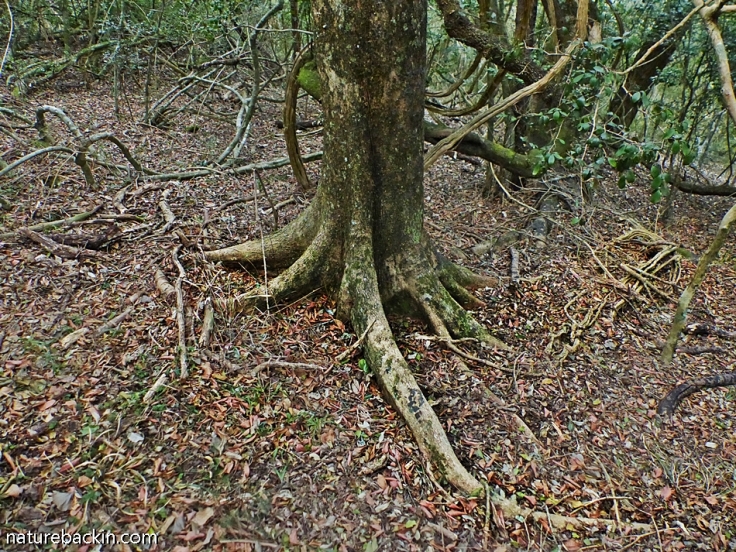
A hint of the massive rooting system anchoring a tall tree of the forest.
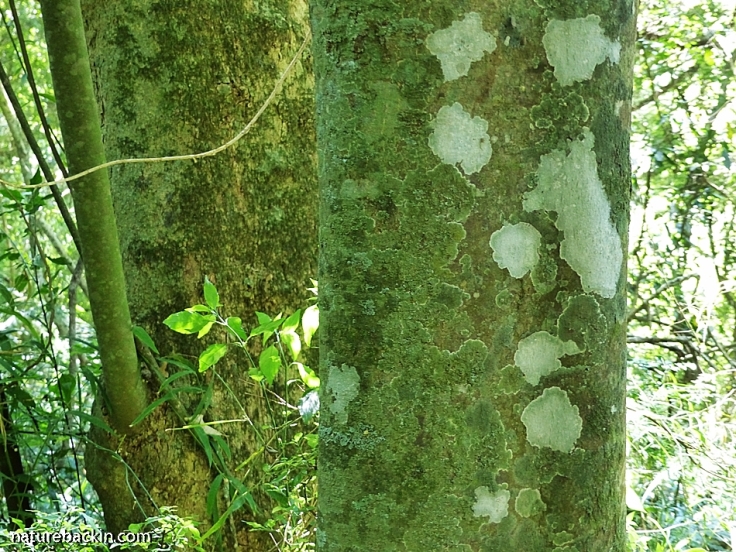
The bark of the forest trees is surprisingly various and beautiful, often patterned by lichens. I venture to guess that the tree in the foreground is a White Stinkwood (Celtis Africana), but would be grateful if anyone knows for sure.

The bark and foliage of the coniferous Real Yellowwood (Podocarpus latifolius). These slow-growing trees can grow up to 30 m in height. They were heavily logged during the colonial era with the wood being used for buildings and furniture. There are three species of Yellowwood in South African forests. Their complex fruiting structures provide food for a variety of animals and birds, including the Cape Parrot. For an interesting article on planting indigenous trees to help rescue the endangered Cape Parrot, which is reliant on indigenous forests and on Yellowwoods in particular for its survival, see here.
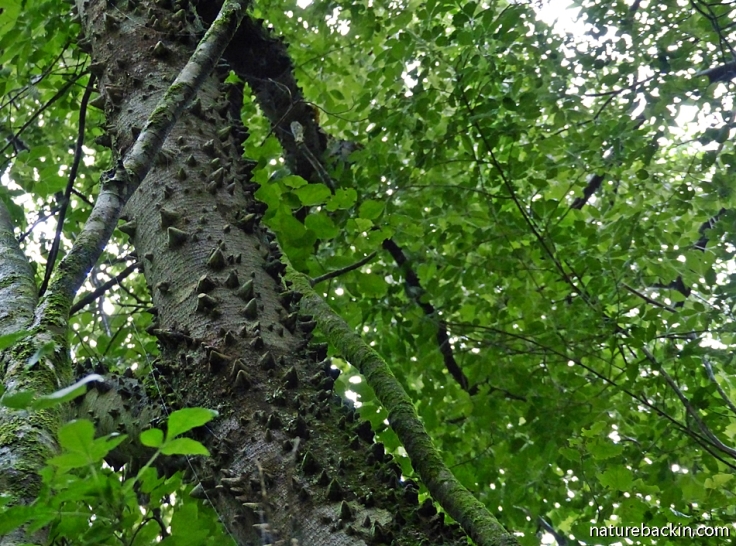
The trunk of the Forest Knobwood, showing its strange knoblike thorns. This tree in the Balgown Conservancy bears a label identifying it as a Zanthoxylum Davyi. Traditionally, twigs of Zanthoxylum species are debarked and beaten flat to make toothbrushes. Additionally, the bark and powdered root are used as a mouthwash and to treat toothache. The plants contain an alkaloid that has been shown to have anti-plaque and anti-inflammatory properties and it is used commercially in toothpastes and oral rinses (Source: Ben-Erik van Wyk and Nigel Gericke. 2007. People’s Plants: A Guide to Useful Plants of Southern Africa. Pretoria: Briza.)

A female black-legged Golden Orb-web Spider shown with several items stashed in her “larder”.
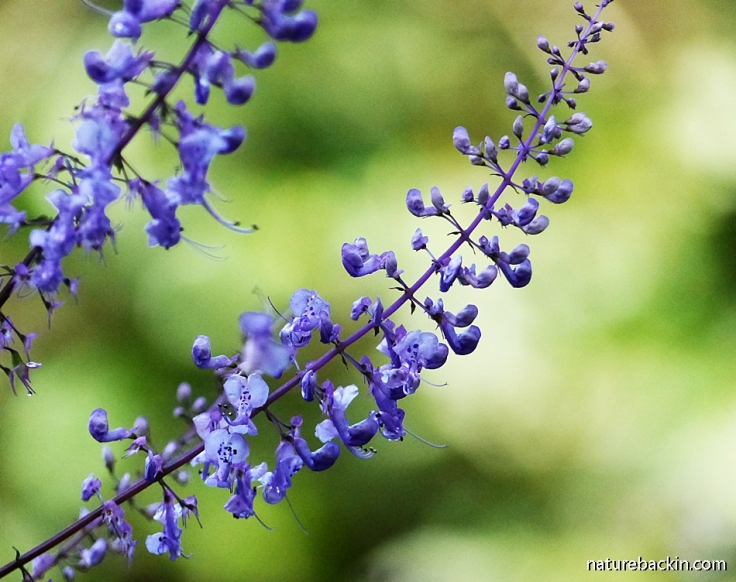
A tall species of Plectranthus flowers particularly well where sunlight filters through the trees. I think this is the Forest Spurflower (Plectranthus fruticosus).
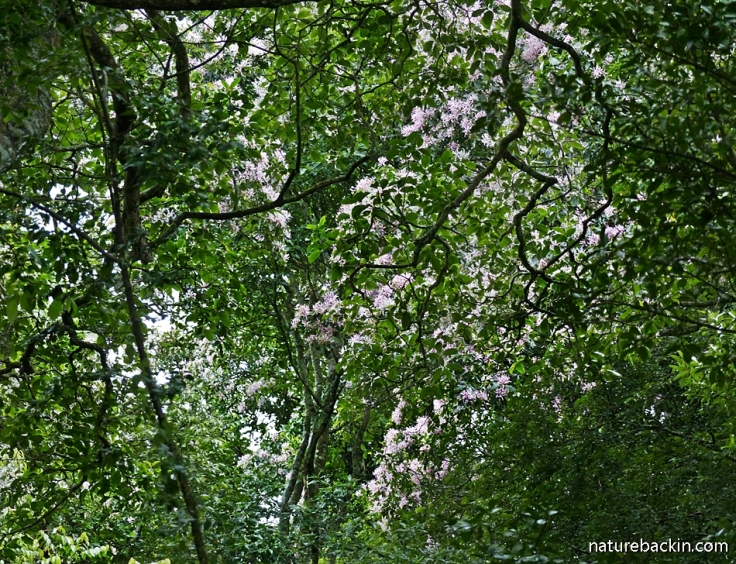
The pink flowers of the Cape Chestnut (Calodendrum capense). Nearby to these trees is a less common variant with white flowers.
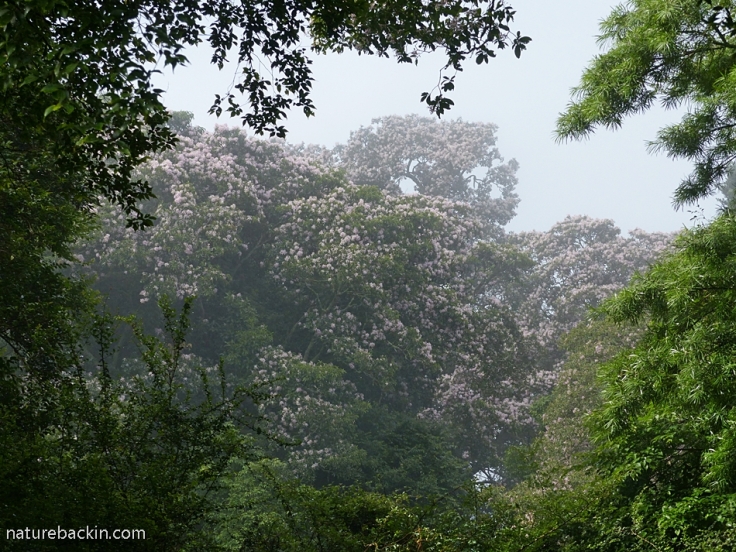
A misty view of Cape Chestnut trees flowering in midsummer.

A winter find on the forest floor: a knobbed seed capsule of the Cape Chestnut, split open to reveal the shiny black seeds within. The seeds of the Cape Chestnut are eaten by Samango Monkeys, African Olive-pigeons and Cape Parrots. Traditionally, Xhosa hunters used the seeds in bracelets for good luck (Source: Boon, Richard. 2010 (2nd ed.). Pooley’s Trees of Eastern South Africa. Durban: Flora & Fauna.)
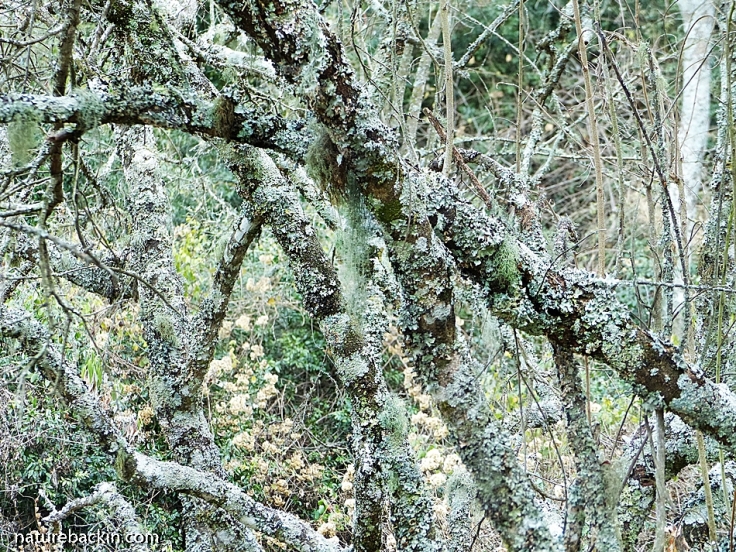
Lichens resembling decorations on trees growing towards the outer edges of a large patch of mistbelt forest.
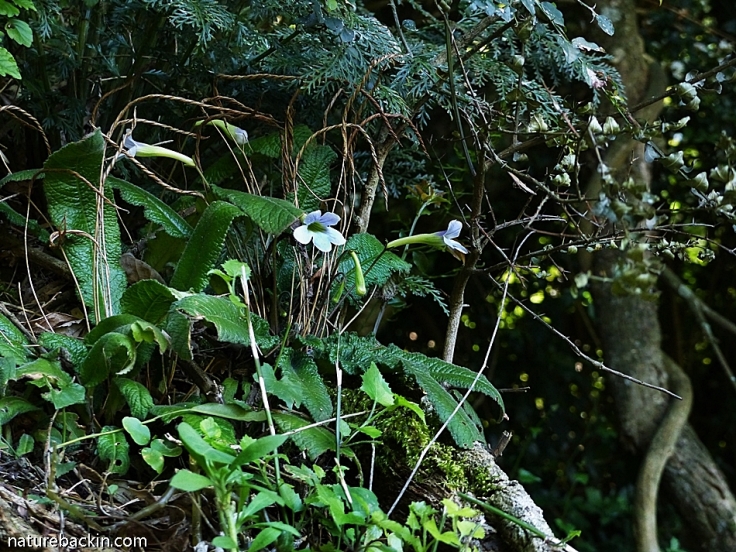
A wild Streptocarpus growing on the edge of a natural forest clearing. Many varieties of Streptocarpus are grown internationally as ornamental houseplants.

Looking painterly photographed through morning mist is this lovely Fireball Lily (Scadoxus multiflorus).

Complex spider webs especially when backlit by slanting sunshine add to the sense of forest mystery
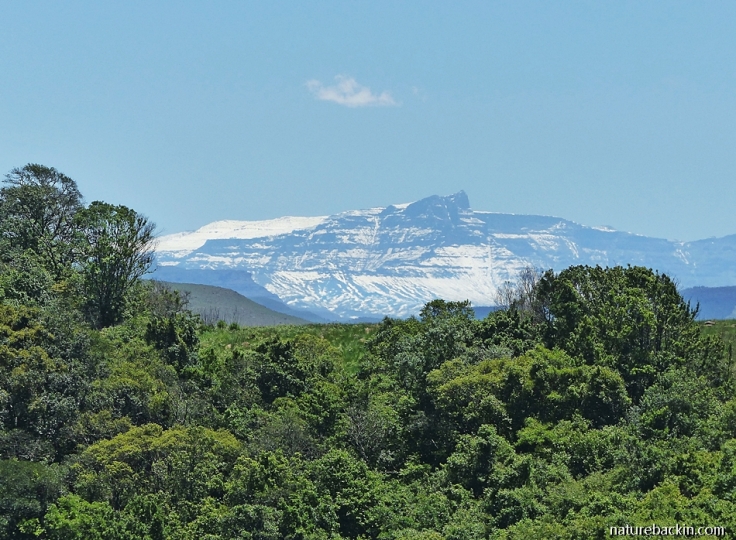
A general view of mistbelt forest in the KwaZulu-Natal Midlands with grassland beyond, presided over by the Drakensberg Mountains after an unseasonal early-summer snowfall. The peak of Giant’s Castle is visible.
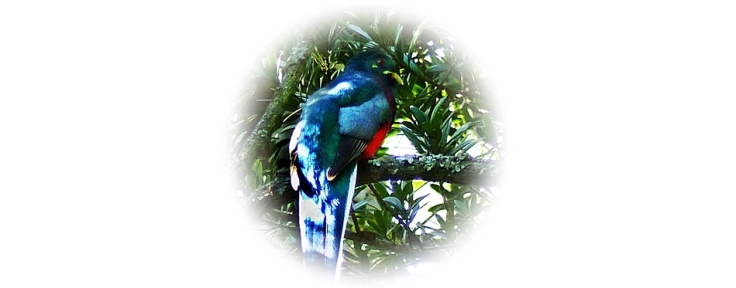 Emblematic of the forest, is the colourful yet elusive (and hard to photograph) Narina Trogon
Emblematic of the forest, is the colourful yet elusive (and hard to photograph) Narina Trogon
Posted by Carol









December 11, 2018 at 3:42 am
These photos are priceless. Especially when I look out the window and see 18 inches of snow (about 1/3 meter).
LikeLiked by 1 person
December 11, 2018 at 7:08 am
That much snow sounds to be incredibly daunting. Glad to bring you a glint of sun and abundance. Keep warm!
LikeLike
December 8, 2018 at 6:04 am
I so love all these up-close images of your forest (you might have guessed)! The cobwebs are simply superb. There are some similarities and quite a few exotic (to me) differences. All very interesting and charming. Not to overlook the snow covered mountain peaks in the distance.
LikeLiked by 1 person
December 10, 2018 at 7:47 pm
Thanks Gunta. It is interesting to compare the details you have photographed in “your” forests with what has caught my eye in forests here (and have been able to photograph!)
LikeLiked by 1 person
December 7, 2018 at 4:20 am
Carol this such a delightful post of our Midlands Mist Forest, so many of my favourite forest jewels!
LikeLiked by 1 person
December 7, 2018 at 7:26 pm
Thanks Christeen. There are so many forest jewels it was quite hard to make a selection, so I am happy that many of your favourites were included 🙂
LikeLiked by 1 person
December 7, 2018 at 4:12 am
Very nice follow up to your previous mistbelt forest post. As they say, the devil is in the details, and details such as spiders and fungi are devilishly fascinating.
LikeLiked by 1 person
December 7, 2018 at 7:24 pm
Thanks Graham. That is an interesting take on the phrase ‘the devil is in the details’!
LikeLiked by 1 person
December 7, 2018 at 2:34 am
So much beauty if we only bother to look! Thank you Carol for another enriching post!
LikeLiked by 1 person
December 7, 2018 at 7:21 pm
Thanks for your kind comment. And I think it is true that much beauty is often overlooked.
LikeLiked by 1 person
December 7, 2018 at 2:22 am
Interesting post, beautifully photographed!
LikeLiked by 1 person
December 7, 2018 at 7:18 pm
Thanks so much Belinda. I find the forest particularly tricky for photography, at least with my camera, because of the high dynamic range of light and shade, and so most of my forest photos are really disappointing. It is a bit easier though to take small details rather than the bigger picture.
LikeLiked by 1 person
December 7, 2018 at 10:43 pm
It certainly can be. I do like what you’ve highlighted😊
LikeLiked by 1 person
December 6, 2018 at 10:55 pm
Lovely photos – I always appreciate spiders more in photos than in my apartment! 🙂
LikeLiked by 1 person
December 7, 2018 at 7:15 pm
Thanks very much. And these spiders would rather be in the forest than in an apartment, I am sure 🙂
LikeLiked by 1 person
December 6, 2018 at 9:54 pm
Thanks for taking us exploring. After last week’s slightly ‘English’ views, this shows us what a different world this forest is part of. And yes indeed. Wonderful photos.
LikeLiked by 1 person
December 7, 2018 at 7:13 pm
Thanks Margaret. It is interesting how forests can be so distinctive, and even forests with similar vegetation can have different characters.
LikeLike
December 6, 2018 at 9:14 pm
What a lush and beautiful forest. I enjoy seeing all the different (new to me) flowers and trees. Wonderful photos!
LikeLiked by 1 person
December 7, 2018 at 7:05 pm
Thanks Eliza. Yes it is lush. Even under dry conditions the forest conserves moisture, and unlike in thirsty commercial plantations, many of the forest streams continue to run.
LikeLiked by 1 person
December 7, 2018 at 10:08 pm
There’s a lesson there.
LikeLiked by 1 person